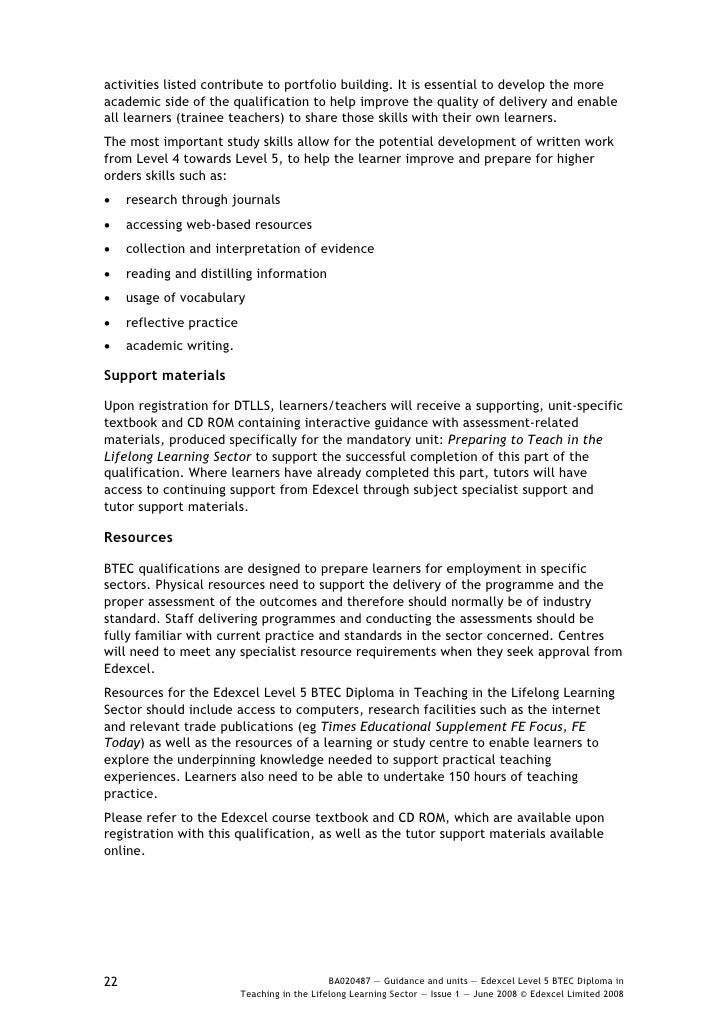
Practical Teaching A Guide To Ptlls Dtlls Pdf File
Review what your role, responsibilities and boundaries as a teacher would be in terms of the teaching/training cycle.This essay discusses the roles and responsibilities of the teacher in the lifelong learning and the boundaries of teaching in order to provide a supportive learning environment. It gives detailed idea of the subject in order to help you complete your homework. Don't copy it but write it in your own words and tailor it to your own field of teaching.Check out the book guaranteed to help you complete all your PTLLS essays.People have different learning styles which are influenced by personality type, educational specialization, career choice, and current job role and tasks (Kolb, 1984). Therefore, research proposes that teachers should assess the learning styles of their students and adapt their classroom methods to best fit each student's learning style.My role of organising and delivering training & development programmes starts by identifying the learners’ needs. Before the course starts, I carry out an initial assessment of all learners, by direct contact and through their training manager.I carry out further evaluation of learners’ needs on the first day of the course through a questionnaire and informal discussions.

Ptlls Unit 001. Unit Number 001 Role, responsibilities and relationships in the lifelong learning. A summary of key aspects of legislation, regulatory requirements and codes of practice relevant to the role and responsibilities of the teacher. Teachers must maintain their knowledge of legislation, regulatory requirements and codes of practice and ensure that they are up to date with all. Description of the book 'Preparing to Teach in the Lifelong Learning Sector': This highly popular and accessible guide to the PTLLS Award is a comprehensive introduction to teaching in a variety of settings within the lifelong learning sector.
I believe this evaluation will also ease and encourage two-way communication during the training. You may notice this meets the concept of Moslow (1954) who proposes that evaluating the different needs, values, drives and priorities of people is incredibly valuable in cross-cultural communications.Interestingly, research conducted by the Lifelong Learning UK (LLUK) shows that ‘identifying needs’ is the first step in the training cycle which is made up of 6 activities, namely:. Identifying Needs. Planning. Designing. Facilitating. Assessing.
EvaluatingTheir research suggests that despite teachers having different roles and responsibilities they share the same broad activities. Please note that the teaching and learning cycle is similar to the training cycle but uses slightly different terminology.My role also includes designing and managing training sessions and material according to companies’ requirements, and delivering training lectures. This involves unnoticeable activities such as maintaining trainee records, filing, and photocopying. My role extends outside the class; I book venues and arrange visual aids, produce PowerPoint material, and attend meetings. Would you imagine how long it can take for me just to prepare, plan and design a one-day training session!Check out the book guaranteed to help you complete all your PTLLS essays, and you can use it to quote references in your essays!In order to facilitate learning, I maintain a professional relationship with learners at all times, value them as individuals and support them (Gravells, 2008). Top 6 free alternatives to fossi for mac pro.
In the class, beside engaging and motivating learners, I ensure a safe and supportive learning environment; for example, it is my duty to set up and discuss with learners ground rules that establish safety and promote inclusion which reduces the barriers to participation and learning (Booth and Ainscow, 2002).I recognise the importance of monitoring and evaluating the learning as the programme progresses and the importance of providing detailed feedback. Following the evaluation and after the training is complete, I also send out a feedback follow-up email to all learners.Business Administration being my specialisation is a large area which includes HR, Finance, Marketing, Information Systems, etc. Which are all constantly developing and changing. It is my responsibility to keep updating myself with knowledge and developments around these subjects. Since I completed my MBA, I have been maintaining memberships with relevant institutions which offer development and guidelines, and have been regularly attending training workshops and courses including the PTTLS.
Also, as part of my responsibility, I follow my organisation’s code of conduct and constantly refer to its manual, and update myself with legislations including the Health & Safety Act and the Equal Opportunities Act.Teachers have wide authority in the class for maximising teaching effectiveness and influencing a positive learning environment, but of course there are limits to how far they can go when performing their duties. There are boundaries and limitations.As a teacher, I will never attempt to express or enforce my own beliefs whether religious or political. I will comply with my organisation’s rules and policies. In cases such as problems with mentally impaired learners, the teacher may seek expert advice or refer the learner to a specialist instead of dealing with a problem in person.Finally, the varying roles, duties and responsibilities of teachers always fall under the umbrella of the teaching and learning cycle. Understanding the responsibilities and boundaries will help the teacher provide a supportive learning environment, stay in focus and achieve the organisation’s goals and the subject’s aims within the limited resources and time.